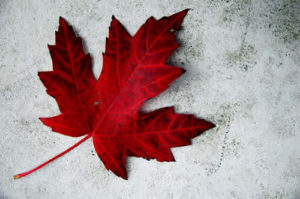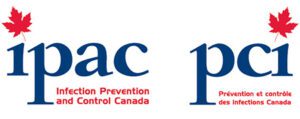Snow Mold
Snow Mold and Associated Allergies
Now while we are usually concerned about mold as it impacts human health inside your home we thought that, as we start moving into the spring thaw, something we should discuss is the presence of an unusual type of mold that is purely seasonal and is found outdoors.
Snow mold is a fungal disease that appears in early spring as the snow melts. There are two types of snow molds, gray and pink, that become active under the snow cover. Gray snow mold (also called Typhula blight) is caused by Typhula spp., while pink snow mold (also called Fusarium patch) is caused by Microdochium nivalis.
Gray snow mold survives hot summer temperatures in the soil or in infected plant debris as sclerotia, resistant fungal structures, while pink snow mold survives as mycelium or spores in infected plant debris. Fungal growth begins in the winter, beneath a cover of snow on unfrozen ground. Growth can take place at temperatures slightly below freezing and may continue after snow melt, as long as the grass remains cool and wet. Gray snow mold activity stops when the temperature exceeds 10° C or the surface dries. Pink snow mold activity may continue during wet weather in the fall and spring, as long as the temperature is between 0° C and 16° C.
Symptoms first appear in the lawn as circular, straw colored patches when the snow melts in the spring. These patches continue to enlarge as long as the grass remains cold and wet. Grass within the patch often has a matted appearance and colored fungal growth. The fungal growth may cover the entire patch or develop along the margins, with gray snow mold being white to gray in color and pink snow mold being white to pink in color. Occasionally, fungal fruiting bodies (mushrooms) may be seen emerging from infected turf. Hard structures, called sclerotia, may also develop on the leaves and crowns of plants infected by gray snow mold, not pink. The sclerotia are spherical in shape and roughly the size of a pinhead. Their presence helps to distinguish gray snow mold from pink snow mold.
Snow molds do not occur in the home lawn every year, but are most common during years when an early, deep snow cover prevents the ground from freezing. A cold, open winter will not promote snow mold, but may cause winter injury. The damage caused by snow molds is seldom serious. Generally, infected areas are just a little slower to green up. Gently rake affected areas of the lawn to promote drying and prevent further fungal growth. Fungicides are not usually recommended, but in severe cases a preventative spray of thiophanate-methyl in October or November may be helpful.
The following steps can be taken to minimize damage in future years:
- Avoid excessive applications of nitrogen fertilizer in the fall.
- Continue to mow the lawn at the recommended height until it is no longer actively growing. The taller the grass, the more likely it will mat down and encourage snow mold development.
- Rake up leaves in the fall.
- Manage the thatch layer to avoid accumulations of more than ½ inch.
- Spread out large snow piles to encourage rapid melting. Use snow fencing to minimize snow accumulation in problem spots.
Why is my snow pink? Is it snow mold and is it safe to eat?
If there’s one thing Earth has taught us, it’s that if a surface or substrate is ever wet, something will grow. And, despite near-zero temperatures, acidity, solar irradiation, and what must be frankly admitted to be minimal nutritional value, snow is no exception.
Over 60 species of algae alone dwell there, and no doubt more await discovery.
Scientists just announced this May the discovery of a new species from Colorado snow that they suggest could be a source of biofuel feedstock for northern climates where other algae cannot thrive.
By far, the most common species of snow alga is Chlamydomonas nivalis, which colors snow red or pink. With their pair of front-mounted flagella, they ply the films of water found in melting snow drifts.
Midsummer is the best time of the year to see them, if you live in a high-altitude or Arctic clime with snowbanks that stubbornly refuse to yield to the sun.
Yet surprisingly, active C. nivalis cells are not pink when you look at them under the microscope.
We do not recommend you eat snow that appears this colour and, in fact, do not recommend you eat snow period. Far worse things, such as bacteria, dust, dirt and residues from air pollution settle on snow quickly which, ingested, may cause illness.

Maple Leaf Mold Inc. is a certified mold / asbestos removal and biological disinfection / air analysis company located in Toronto that uses certified IICRC technicians for all testing and remediation projects.
We are a professionally licensed firm experienced in testing, verifying and removing Mold / Asbestos / Lead and other environmental contaminants as well as providing disinfection services to control and kill biological contaminants.
Call 416-254-7256 to talk with us about your issue anytime.



